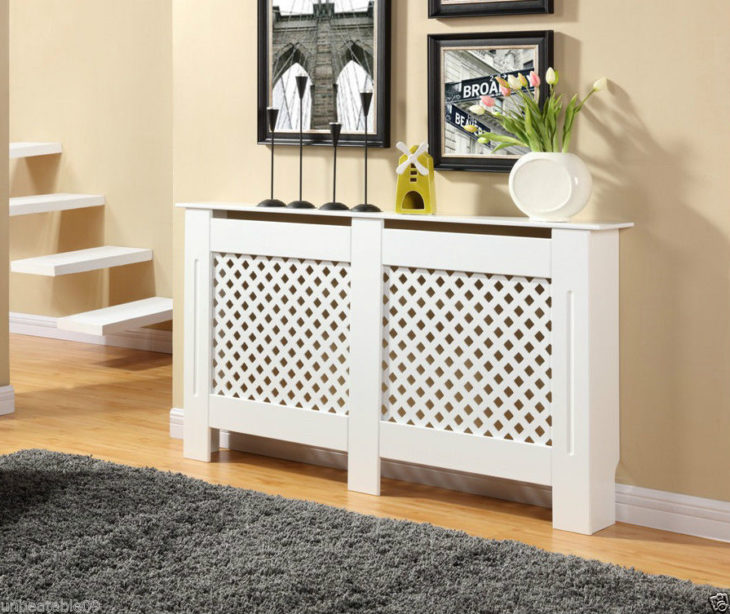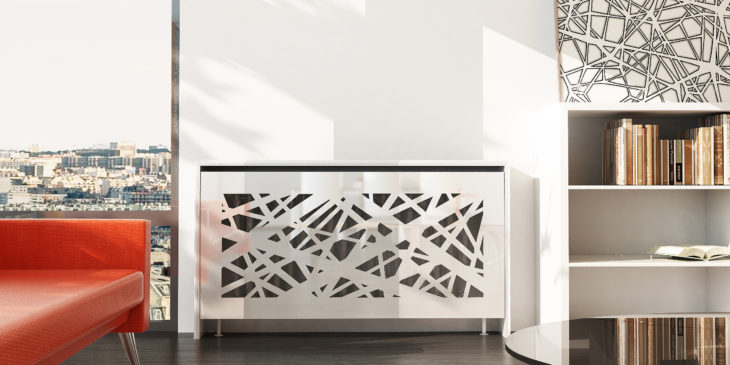The first radiator covers were created to cover the unseemly sight of ugly radiators. Today, there are stylishly designed radiators on the market, but these usually cost much more than the ordinary ones, so people rarely buy them. However, radiator masks have other functions as well, not just an aesthetic one.
Radiators take up a lot of space in our rooms, something that is especially important in smaller houses and apartments. Some of it can be reclaimed by radiator covers that can double as shelves for books or flowers. Low radiators can be even transformed into benches, creating a cozy and warm sitting area. Another option is making a TV stand out of them.

Source: Pinterest
Old cast iron radiators can be ugly and dull. Although we now have various specialized paints that can liven them up, painting can be a chore and not something many owners are ready to deal with, not to mention it can be expensive. Covers can achieve the same effect, but they are often cheaper and easy to install, without the need to call for outside help.
Another benefit is that radiator covers can reduce all those noises radiators make, especially if the system is old. Various burps, hissing, and pops can be quite unpleasant, especially in the middle of the night. A properly fitted cover will keep them at minimum.

Source: Pinterest
Although radiators aren’t usually scalding hot and can’t cause burns, making them child-proof is usually a good idea. Radiator covers can serve that function as well. They will also prevent hot water blasting the surrounding area in the case of a malfunction or valve failure.
The important thing to note is that radiators work by convection. The air is heated between radiator fins, causing it to move upwards. That is why it is very important to choose radiator covers that don’t impede or block the airflow around them since that will reduce their function.
